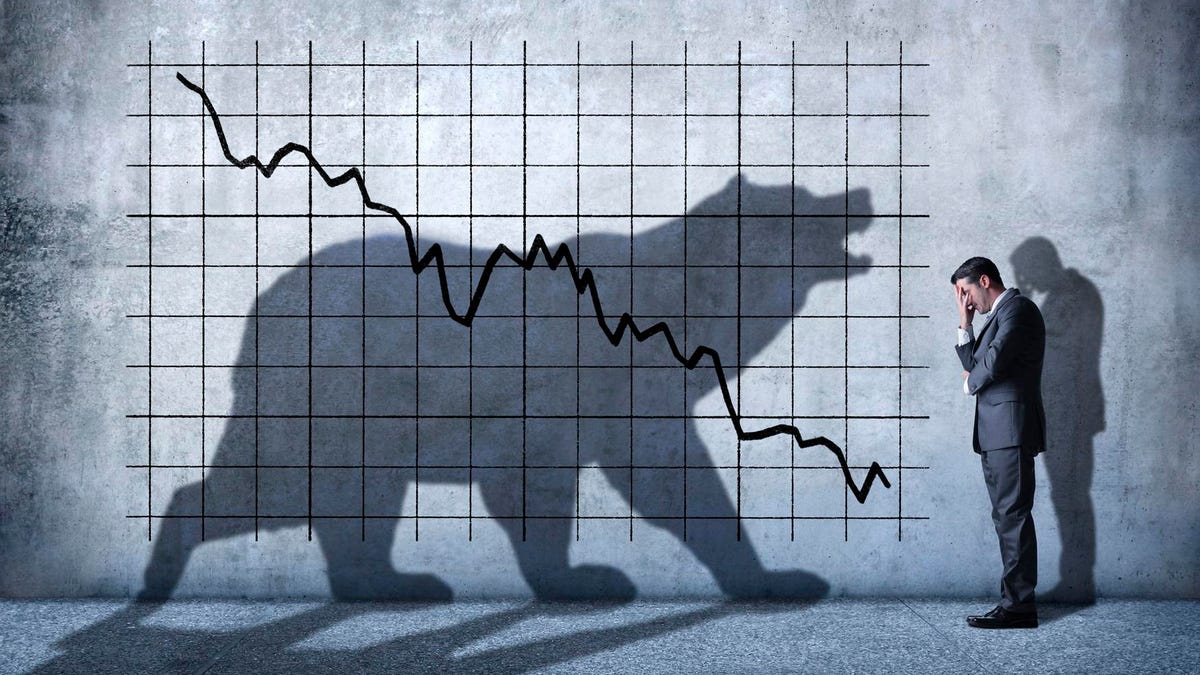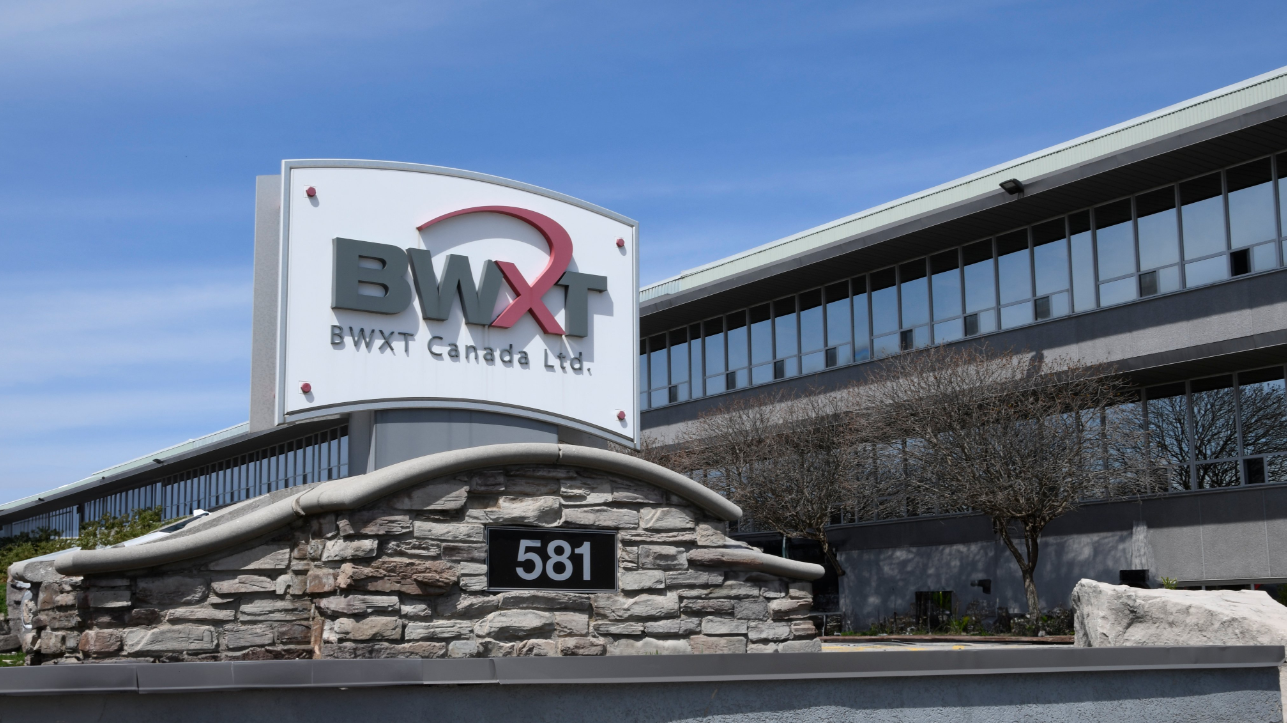Investment
Healthcare Investments Are Slowing Down – Forbes

The global economy is currently at a turbulent intersection, one that even the most celebrated economic pundits and fiscal savants cannot seem to accurately navigate. While some say that the economy is headed for a “soft-landing,” others exclaim that a full-blown recession is inevitable.
The healthcare industry is by no means immune to these economic pressures. In fact, healthcare has had many years of its own unique fiscal challenges— those that were uniquely exacerbated by the Covid-19 pandemic. Regardless, over the last decade, venture capital (VC) funding and investments in healthcare have actually been quite strong, as investors were eager to invest in cutting-edge technologies and the next generation of care delivery. Now, however, these same sources of funding are starting to slow down in fear of economic turmoil, indicating that rapid innovation in healthcare may indeed take a pause.
A recent report by Rock Health indicated that there has been a significant slow down in healthcare funding, specifically in the areas of the digital health. The report authors explain: “For the digital health sector, 2022 was a downhill ride—one that we think signals the tail end of a macro funding cycle centered around the COVID-19-era investment boom […] 2022’s total funding among US-based digital health startups amounted to $15.3B across 572 deals, with an average deal size of $27M. Not only did 2022’s annual funding total come in at just over half of 2021’s $29.3B2, but it also just squeaked past 2020’s $14.7B sum. Notably, 2022’s year’s Q4 $2.7B total was less than half of last year’s Q4 raise ($7.4B).”
As the report alludes to, the digital health industry has seen an incredible boom over the last decade. The U.S. Food and Drug Administration (FDA) defines digital health broadly as anything which “includes categories such as mobile health (mHealth), health information technology (IT), wearable devices, telehealth and telemedicine, and personalized medicine.” And given its relatively broad scope, digital health tools have had tremendous impact over a variety of healthcare sub-industries, ranging from diagnostics and care delivery, to augmented healthcare insights and tools for data-driven decision making.
One of the most notable areas has been the boom of telehealth and virtual health services, which was especially fueled by stay-at-home and social distancing restrictions during the Covid-19 pandemic. Notable names in this space that captured an immense amount of attention are Teladoc and Amwell. These companies continue to innovate in the virtual care space.
In terms of “big tech,” companies such as Amazon, Walmart, Google, and even Oracle have continued their investments in digital health and healthcare technology. For example, Amazon’s bold purchase of One Medical will undoubtedly give the eCommerce giant a significant leap forward into healthcare delivery. Leveraging its incredible technology platform, millions of insights on consumer retail patterns, and last-mile logistics network, this venture by Amazon will definitely be a game-changer.
However, even “big tech” has not been immune to economic pressures. Last year, Google announced that it would be moving many of its employees from its Health division into other positions around the company, indicating a “shake-up” of its health vertical. Similarly, Amazon itself shut down its “Care” business, citing that Amazon Care was likely not the best way to deliver valuable impact to its clients or patients. These moves candidly illustrate that even the most successful companies have to execute challenging decisions to maintain fiscal responsibility.
Assuredly, economic conditions will not improve overnight, and a sense of uncertainty will likely last for the coming months, if not for years. The healthcare system as a whole is already skating on thin ice, balancing razor-thin margins while also dealing with macro-economic issues such as increased costs, a significant labor shortage, and changing consumer preferences. Given these circumstances, investments in healthcare innovation and technology will likely also slow down in the near future. However, as history has indicated, the healthcare industry is resilient and relentless. Undoubtedly, both the economy and consumers will find a way to reinvigorate it in due time, and innovation will be bountiful, yet again.
Investment
BWXT announces $80M investment for plant in Cambridge – CityNews Kitchener


BWX Technologies (BWXT) in Cambridge is investing $80-million to expand their nuclear manufacturing plant in Cambridge.
Minister of Energy, Todd Smith, was in the city on Friday to join the company in the announcement.
The investment will create over 200 new skilled and unionized jobs. This is part of the province’s plan to expand affordable and clean nuclear energy to power the economy.
“With shovels in the ground today on new nuclear generation, including the first small modular reactor in the G7, I’m so pleased to see global nuclear manufacturers like BWXT expanding their operations in Cambridge and hiring more Ontario workers,” Smith said. “The benefits of Ontario’s nuclear industry reaches far beyond the stations at Darlington, Pickering and Bruce, and this $80 million investment shows how all communities can help meet Ontario’s growing demand for clean energy, while also securing local investments and creating even more good-paying jobs.”
The added jobs will support BWXT’s existing operations across the province as well as help the sector’s ongoing operations of existing nuclear stations at Darlington, Bruce and Pickering.
“Our expansion comes at a time when we’re supporting our customers in the successful execution of some of the largest clean nuclear energy projects in the world,” John MacQuarrie, President of Commercial Operations at BWXT, said.
“At the same time, the global nuclear industry is increasingly being called upon to mitigate the impacts of climate change and increase energy security and independence. By investing significantly in our Cambridge manufacturing facility, BWXT is further positioning our business to serve our customers to produce more safe, clean and reliable electricity in Canada and abroad.”
Investment
AI investments will help chip sector to recover: Analyst – Yahoo Finance
The semiconductor sector is undergoing a correction as interest rate cut expectations dwindle, prompting concerns about the impact on these high-growth, technology-driven stocks. Wedbush Enterprise Hardware Analyst Matt Bryson joins Yahoo Finance to discuss the dynamics shaping the chip industry.
Bryson acknowledges that the rise of generative AI has been a significant driving force behind the recent success of chip stocks. While he believes that AI is shifting “the way technology works,” he notes it will take time. Due to this, Bryson highlights that “significant investment” will continue to occur in the chip market, fueled by the growth of generative AI applications.
However, Bryson cautions that as interest rates remain elevated, it could “weigh on consumer spending.” Nevertheless, he expresses confidence that the AI revolution “changing the landscape for tech” will likely insulate the sector from the effect of high interest rates, as investors are unwilling to miss out on the “next technology” breakthrough.
For more expert insight and the latest market action, click here to watch this full episode of Yahoo Finance.
This post was written by Angel Smith
Video Transcript
BRAD SMITH: As rate cut bets shift, so have moves in one sector, in particular. Shares of AMD and Intel, both down over 15% in the last 30 days. The Philadelphia Semiconductor Index, also known as Sox, dropping over 10% from recent highs, despite a higher rate environment.
Our next guest is still bullish on the sector. Matt Bryson, Wedbush Enterprise Hardware analyst, joins us now. Matt, thanks so much for taking the time here. Walk us through your thesis here, especially, given some of the pullback that we’ve seen recently.
MATT BRYSON: So I think what we’ve seen over the last year or so is that the growth of generative AI has fueled the chip stocks. And the expectation that AI is going to shift everything in the way that technology works.
And I think that at the end of the day, that that thesis will prove out. I think the question is really timing. But the investments that we’ve seen that have lifted NVIDIA, that have lifted AMD, that have lifted the chip stock and sector, in general, the large cloud service providers, building out data centers. I don’t think anything has changed there in the near term.
So when I speak to OEMs, who are making AI servers, when I speak to cloud service providers, there is still significant investment going on in that space. That investment is slated to continue certainly into 2025. And I think, as long as there is this substantial investment, that we will see chip names report strong numbers and guide for strong growth.
SEANA SMITH: Matt, when it comes to the fact that we are in this macroeconomic environment right now, likelihood that rates will be higher for longer here, at least, when you take a look at the expectations, especially following some of the commentary that we got from Fed officials this week, what does that signal more broadly for the AI trade, meaning, is there a reason to be a bit more cautious in this higher for longer rate environment, at least, in the near term?
MATT BRYSON: Yeah. I think certainly from a market perspective, high interest rates weight on the market. Eventually, they weigh on consumer spending. Certainly, for a lot of the chip names, they’re high multiple stocks.
When you think about where there can be more of a reaction or a negative reaction to high interest rates, certainly, it has some impact on those names. But in terms of, again, AI changing the fundamental landscape for tech, I don’t think that high interest rates or low interest rates will change that.
So when you think about Microsoft, Amazon, all of those large data center operators looking at AI, potentially, changing the landscape forever and wanting to make a bet on AI to make sure that they don’t miss that change, I don’t think whether interest rates are low or high are going to really affect their investment.
I think they’re going to go ahead and invest because no one wants to be the guy that missed the next technology wave.
Investment
If pension funds can't see the case for investing in Canada, why should you? – The Globe and Mail


It’s time to ask a rude question: Is Canada still worth investing in?
Before you rush to deliver an appropriately patriotic response, think about the issue for a moment.
A good place to begin is with the federal government’s announcement this week that it is forming a task force under former Bank of Canada governor Stephen Poloz. The task force’s job will be to find ways to encourage Canadian pension funds to invest more of their assets in Canada.
Wooing pension funds has become a high-priority matter for Ottawa because, at the moment, these big institutional investors don’t invest all that much in Canada. The Canada Pension Plan Investment Board, for instance, had a mere 14 per cent of its massive $570-billion portfolio in Canadian assets at the end of its last fiscal year.
Other major Canadian pension plans have similar allocations, especially if you look beyond their holdings of government bonds and consider only their investments in stocks, infrastructure and real assets. When it comes to such risky assets, these big, sophisticated players often see more potential for good returns outside of Canada than at home.
This leads to a simple question: If the CPPIB and other sophisticated investors aren’t overwhelmed by Canada’s investment appeal, why should you and I be?
It’s not as if Canadian stocks have a record of outstanding success. Over the past decade, they have lagged far behind the juicy returns of the U.S.-based S&P 500.
To be fair, other countries have also fallen short of Wall Street’s glorious run. Still, Canadian stocks have only a middling record over the past 10 years even when measured against other non-U.S. peers. They have trailed French and Japanese stocks and achieved much the same results as their Australian counterparts. There is no obvious Canadian edge.
There are also no obvious reasons to think this middle-of-the-pack record will suddenly improve.
A generation of mismanagement by both major Canadian political parties has spawned a housing crisis and kneecapped productivity growth. It has driven household debt burdens to scary levels.
Policy makers appear unwilling to take bold action on many long-standing problems. Interprovincial trade barriers remain scandalously high, supply-managed agriculture continues to coddle inefficient small producers, and tax policy still pushes people to invest in homes rather than in productive enterprises.
From an investor’s perspective, the situation is not that appetizing. A handful of big banks, a cluster of energy producers and a pair of railways dominate Canada’s stock market. They are solid businesses, yes, but they are also mature industries, with less than thrilling growth prospects.
What is largely missing from the Canadian stock scene are big companies with the potential to expand and innovate around the globe. Shopify Inc. SHOP-T and Brookfield Corp. BN-T qualify. After that, the pickings get scarce, especially in areas such as health care, technology and retailing.
So why hold Canadian stocks at all? Four rationales come to mind:
- Canadian stocks have lower political risk than U.S. stocks, especially in the run-up to this year’s U.S. presidential election. They also are far away from the front lines of any potential European or Asian conflict.
- They are cheaper than U.S. stocks on many metrics, including price-to-earnings ratios, price-to-book ratios and dividend yields. Scored in terms of these standard market metrics, they are valued more or less in line with European and Japanese stocks, according to Citigroup calculations.
- Canadian dividends carry some tax advantages and holding reliable Canadian dividend payers means you don’t have to worry about exchange-rate fluctuations.
- Despite what you may think, Canada’s fiscal situation actually looks relatively benign. Many countries have seen an explosion of debt since the pandemic hit, but our projected deficits are nowhere near as worrisome as those in the United States, China, Italy or Britain, according to International Monetary Fund figures.
How compelling you find these rationales will depend upon your personal circumstances. Based strictly on the numbers, Canadian stocks look like ho-hum investments – they’re reasonable enough places to put your money, but they fail to stand out compared with what is available globally.
Canadians, though, have always displayed a striking fondness for homebrew. Canadian stocks make up only a smidgen of the global market – about 3 per cent, to be precise – but Canadians typically pour more than half of their total stock market investments into Canadian stocks, according to the International Monetary Fund. This home market bias is hard to justify on any rational basis.
What is more reasonable? Vanguard Canada crunched the historical data in a report last year and concluded that Canadian investors could achieve the best balance between risk and reward by devoting only about 30 per cent of their equity holdings to Canadian stocks.
This seems to be more or less in line with what many Canadian pension funds currently do. They have about half their portfolio in equities, so devoting 30 per cent of that half to domestic stocks works out to holding about 15 per cent of their total portfolio in Canadian equities.
That modest allocation to Canadian stocks is a useful model for Canadian investors of all sizes. And if Ottawa doesn’t like it? Perhaps it could do more to make Canada an attractive investment destination.
-
Media15 hours ago
DJT Stock Rises. Trump Media CEO Alleges Potential Market Manipulation. – Barron's
-
Media17 hours ago
Trump Media alerts Nasdaq to potential market manipulation from 'naked' short selling of DJT stock – CNBC
-
Investment16 hours ago
Private equity gears up for potential National Football League investments – Financial Times
-



 Sports20 hours ago
Sports20 hours ago2024 Stanley Cup Playoffs 1st-round schedule – NHL.com
-
Real eState8 hours ago
Botched home sale costs Winnipeg man his right to sell real estate in Manitoba – CBC.ca
-
Business16 hours ago
Gas prices see 'largest single-day jump since early 2022': En-Pro International – Yahoo Canada Finance
-
Art19 hours ago
Enter the uncanny valley: New exhibition mixes AI and art photography – Euronews
-
News14 hours ago
Canada Child Benefit payment on Friday | CTV News – CTV News Toronto





